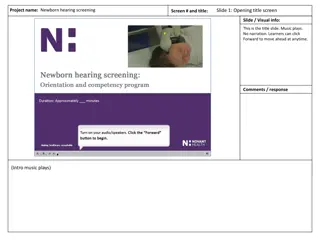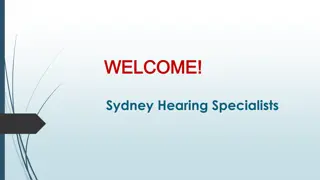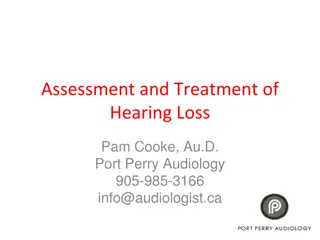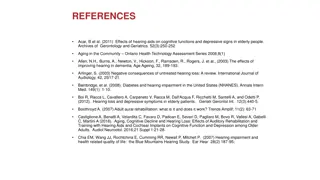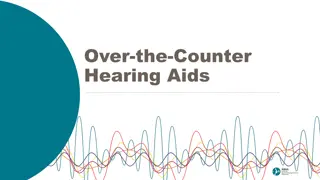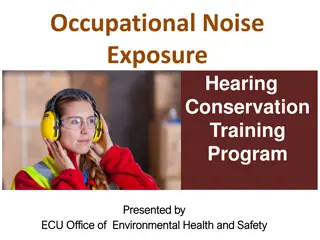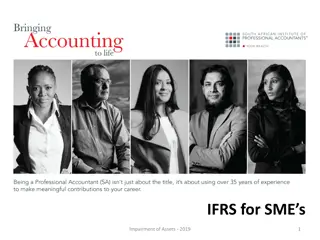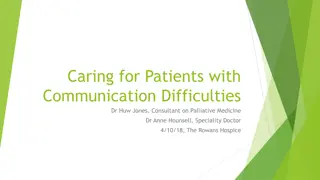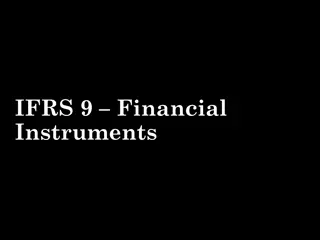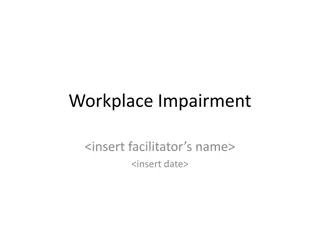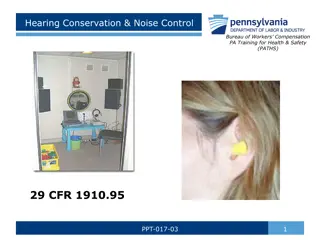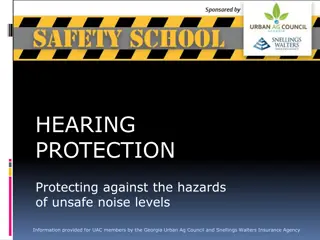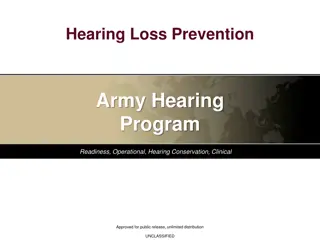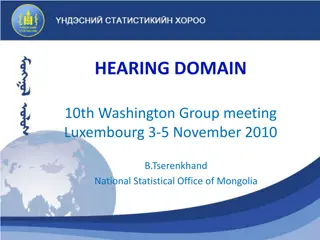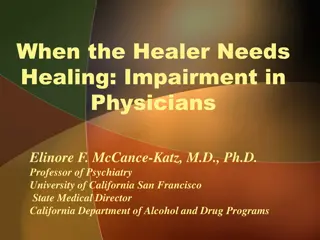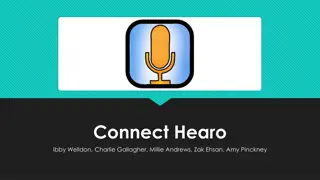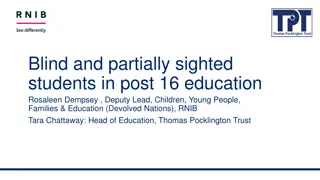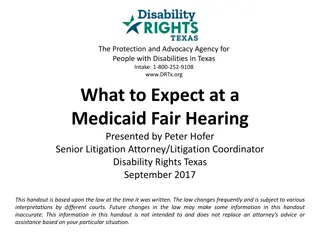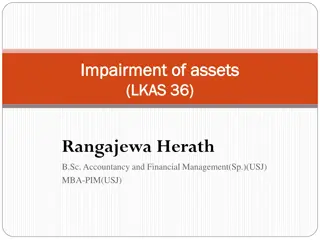Understanding Hearing Impairment and Its Impact on Education
Hearing impairment, whether permanent or fluctuating, can adversely affect a child's educational performance. In the educational context, terms like deafness, hard of hearing, and hearing loss are used instead of hearing impairment. Eligibility criteria for special education services under IDEA require documentation of an adverse educational impact and the need for specially designed instruction. Various causes of hearing loss, including conductive and sensorineural hearing loss, can stem from factors like ear infections, allergies, trauma, or aging. Professional advocacy organizations and prevalence data shed light on the support available and the number of students receiving special education services due to hearing impairments.
- Hearing Impairment
- Education Impact
- Special Education
- Deaf and Hard of Hearing
- Causes of Hearing Loss
Uploaded on Sep 15, 2024 | 0 Views
Download Presentation

Please find below an Image/Link to download the presentation.
The content on the website is provided AS IS for your information and personal use only. It may not be sold, licensed, or shared on other websites without obtaining consent from the author. Download presentation by click this link. If you encounter any issues during the download, it is possible that the publisher has removed the file from their server.
E N D
Presentation Transcript
Hearing Impairment Hearing Impairment
Definition Definition IDEA Definition 300.8 (c) (5) Hearing impairment means an impairment in hearing, whether permanent or fluctuating, that adversely affects a child s educational performance but that is not included under the definition of deafness in this section.
Eligibility Criteria Eligibility Criteria Deafness and Hearing Impairment are clinical terms as well as separate educational disability classifications, under the IDEA. The eligibility criteria for both Deafness and Hearing Impairment requires documentation of an adverse educational impact and the need for specially designed instruction, which is not based solely on a clinical or medical diagnosis. The terms deaf or hard of hearing and hearing loss are now utilized to replace the term hearing impaired and its variations. The term hard of hearing may also be used in place of hearing impairment for the eligibility determination.
Professional Advocacy Organizations Professional Advocacy Organizations VDOE Deaf and Hard of Hearing VDOE lists a wide range of organizations for supporting children, youth, and adults who are deaf or hard of hearing based on communication preferences.
Prevalence Prevalence In 2020 21, the number of students ages 3 21 who received special education services under the Individuals with Disabilities Education Act (IDEA) was 7.2 million, or 15 percent of all public school students. .5% of all school-age children in special education, ages 3 through 21 years, received special education under the category of HI.
Causes Causes Conductive hearing loss can be the result of: ear infections allergies swimmer s ear a buildup of wax in the ear A foreign object that has become stuck in the ear, benign tumors or scarring of the ear canal due to recurrent infections are all potential causes of hearing loss. Sensorineural Hearing Loss (SNHL) SNHL happens when there s damage to inner ear structures or in the nerve pathways to the brain. This type of hearing loss is usually permanent. SNHL makes even distinct, normal, or loud sounds seem muffled or unclear.
Causes part 2 Causes part 2 SNHL can result from: birth defects that alter the structure of the ear aging working around loud noises trauma to the head or skull Meniere s disease, which is a disorder of the inner ear that can affect hearing and balance. acoustic neuroma, which is a noncancerous tumor that grows on the nerve that connects the ear to the brain called the vestibular cochlear nerve Infections Infections such as the following can also damage the nerves of the ear and lead to SNHL: measles meningitis mumps scarlet fever
Causes part 3 Causes part 3 Ototoxic Medications Some medications, called ototoxic medications, may also cause SNHL. According to the ASHA, there are over 200 over-the-counter and prescription medications that may cause hearing loss. If you re taking medications for cancer, heart disease, or a serious infection, talk to your doctor about the hearing risks involved with each. Mixed Hearing Loss Mixed hearing loss may also occur. This happens when both conductive hearing loss and SNHL occur at the same time.
Characteristics Characteristics Speech Delays Communication Difficulties Selective Hearing Behavioral Characteristics Differential Diagnosis
Instructional Strategies Instructional Strategies Let the child see the book, your face and signs simultaneously. Don t be limited by the print - expand on pictures. Be dramatic - use props, exaggerate, use facial expression, eye gaze, body shift to show different characters. Vary location of signing - on book, on child, etc. Read a story several times if a child asks. Act out the story together after reading it. Utilize the whole language philosophy. Use signed English, Cued Speech, and more fingerspelling to clarify differences between ASL and printed English. Encourage students to translate between sign language and English, and to make connections between all modes presented.
Placements Placements The majority of children who are deaf or hard of hearing attend local public schools 63% receive most of their education in regular education classrooms with hearing students 15% attend resource rooms for part of the school day 11% are served in separate classrooms 2% attend residential schools for the deaf About 50% of all students with hearing loss go on to college.


